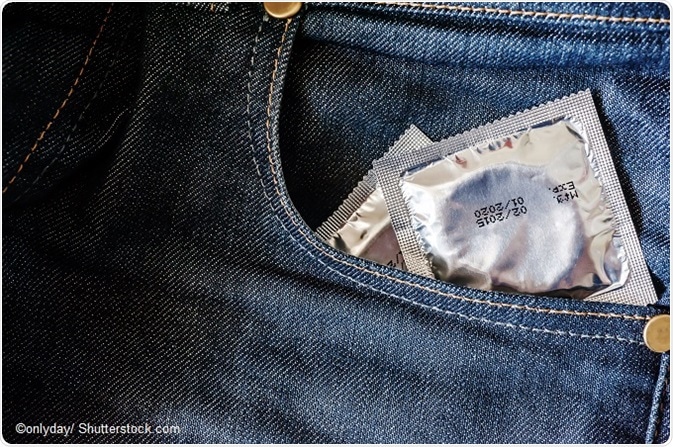Oral and anal sex are two of the different ways of reaching sexual intimacy with your partner. Not everyone in a relationship will practice both of these sexual behaviours. It is a matter of personal preference. While condoms are essentially a birth control method, they can also be used to prevent sexually transmitted diseases. It is for this reason that condoms or similar barriers are used during oral and anal sex.

What is anal sex?
An intimate sexual act wherein the penis is inserted into the anus of the partner is termed anal sex. Anal sex has been cited as the riskiest sexual behaviour for transmission of HIV as per the CDC. Being the receptive partner, puts you at a higher risk than being the insertive partner for sexually transmitted infections. That is, the chance of becoming infected is 13 times higher for the receptive partner as per a study conducted by the CDC.
The infection may be carried by blood, semen, pre-cum or rectal fluids. Since the fluids are deposited within the receptive partner during ejaculation, the risk of infection is more. The insertive partner is also at risk if cuts, scratches and open sores are present on the penis. It is possible to reduce the risk associated with anal sex by using a barrier to prevent the intermingling of bodily fluids. This is where a condom is useful.
Reducing the risk of contracting sexually transmitted infections during anal sex
Exchange of bodily fluids is a given during unprotected sexual intercourse. There are a number of ways to reduce the risk of infection while being sexually active. In case of anal sex, the risk of infection is considerably higher than with vaginal intercourse.
While anal sex does not allow the possibility of becoming pregnant, it is still possible to use the barrier method called the condom to avoid the spread of infection. Ensuring that the insertive partner uses a condom is a good way to reduce the risk.
If condoms are being used for anal sex, it is a good idea to pair it with the application of a water-based lubricant. This will reduce the danger of slipping off due to friction or breakage during use. Oil-based lubricants should not be used with condoms as they react with the latex and disintegrate the material. Silicon-based lubricants can also be used with condoms, if water based-lubricants are unavailable.
Choose to reduce the risk of STIs by reducing the number of partners you have sexual relationships with. If you have a single partner, who is healthy and gets regular check-ups, you are less likely to develop infections of a sexual nature. Also ensure that you get a physical check-up done regularly to ensure no infection sneaks up on you.
What is oral sex?
Oral sex involves the use of the mouth on either the penis or the vagina. Fellatio is the sexual act of putting the mouth to the penis, also known colloquially as giving a blow-job. Cunnilingus is the act of intimacy where the mouth is used on the vagina, colloquially known as going down. When the mouth is used on the anus it is known as rimming.
All these intimate acts come under having oral sex. It is a personal choice and not a must. Couples decide what they are comfortable doing together during oral sex. While it is not possible to become pregnant during oral sex as there is no penetration of the vagina by the penis, it is still possible to develop a sexually transmitted infection (STI) from these acts.
Using dental dams to reduce STIs during oral sex
For protection from STIs during oral sex, many individuals make use of a dental dam or what is colloquially called “licks”. This is a square latex sheet which is used to prevent exchange of bodily fluids. A dental dam is used to cover the vulva area while the mouth is engaged in oral sex. The dental dam must be held in place with both hands to ensure that bodily fluids are not exchanged.
Should a dental dam not be easily available it is possible to use cling film or sarang wrap for the same purpose. Just ensure that the material completely covers the vulva region during oral sex. It may be doubled up to ensure that it does not tear during use.
It is also possible to create a dental dam from a condom. The closed end of the condom needs to be carefully cut off using a pair of scissors. Then the condom is cut length-wise in a straight line. This should leave a rectangular piece of latex similar to the dental dam sheet. It can now be placed on the vulva region and used like a dental dam.
References
- https://www.aids.gov/hiv-aids-basics/prevention/reduce-your-risk/sexual-risk-factors/
- https://www.cdc.gov/hiv/risk/analsex.html
- http://www.pamf.org/teen/sex/std/oral/
Further Reading
- All Contraception Content
- Advantages and Disadvantages of the Contraceptive Patch
- Advantages and Disadvantages of the Contraceptive Implant
- Advantages and Disadvantages of the Contraceptive Vaginal Ring
- Do Contraceptive Injections Affect Bones?
Last Updated: Feb 26, 2019

Written by
Cashmere Lashkari
Cashmere graduated from Nowrosjee Wadia College, Pune with distinction in English Honours with Psychology. She went on to gain two post graduations in Public Relations and Human Resource Training and Development. She has worked as a content writer for nearly two decades. Occasionally she conducts workshops for students and adults on persona enhancement, stress management, and law of attraction.
Source: Read Full Article